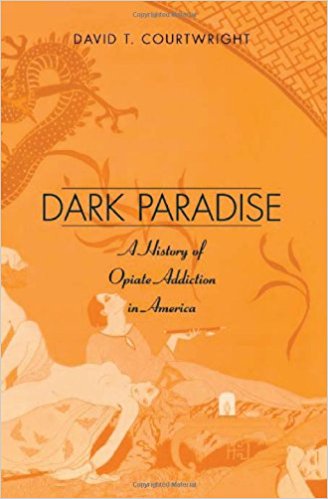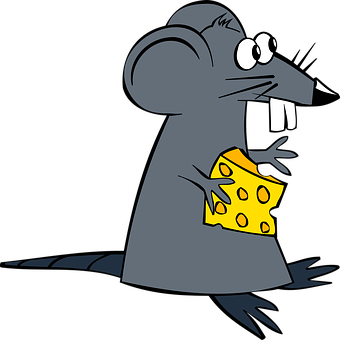Do 80% of Heroin Users Really Start With a Prescription?
/By Roger Chriss, Columnist
U.S. Attorney General Jeff Sessions recently announced a new plan by the DEA to further tighten production quotas for opioid pain medication as a step in the fight against opioid abuse and addiction.
The proposal appears in the Federal Register with the following explanation:
“Users may be initiated into a life of substance abuse and dependency after first obtaining these drugs from their health care providers…. Once ensnared, dependency on potent and dangerous street drugs may ensue. About 80% of heroin users first misused prescription opioids. Thus, it may be inferred that current users of heroin and fentanyl largely entered the gateway as part of the populations who previously misused prescription opioids."
This is not a new claim by the DEA. In its 360 Strategy: Diversion Control, the DEA plainly states, “The connection between prescription opioid abuse and heroin use is clear, with 80% of new heroin abusers starting their opioid addiction by misusing prescription medications.”
Where does the 80% figure come from?
The DEA cites the National Institute on Drug Abuse (NIDA) as its source, while NIDA in turn references a 2013 study by the Substance Abuse and Mental Health Administration (SAMHSA).
SAMHSA pooled a decade's worth of data from the National Survey on Drug Use and Health and found that “four out of five recent heroin initiates (79.5 percent) previously used NMPR (nonmedical use of pain relievers)."
But the SAMHSA study did not examine how many of those heroin users had a valid prescription for opioids, so the DEA claim about users "first obtaining these drugs from their health care providers" is untrue. SAMHSA also notes that "the literature on transition from NMPR to heroin use is relatively sparse" and that the "vast majority" of people who abuse opioid medication never actually progress to heroin.
The abuse of opioid medication by heroin users also varies considerably by time, region and demographics -- so must users don't fit neatly into the 80% claim. A review article in The New England Journal of Medicine reports that prior nonmedical use of opioid medication was found in 50% of young adult heroin users in Ohio, in 86% of heroin users in New York and Los Angeles, and in 40%, 39%, and 70% of heroin users in San Diego, Seattle, and New York respectively.
Conversely, studies on the medical use of opioid analgesics show very low rates of opioid addiction. A review in the journal Addiction concluded that “The available evidence suggests that opioid analgesics for chronic pain conditions are not associated with a major risk for developing dependence.”
A 2016 article in The New England Journal of Medicine by Dr. Nora Volkow, Director of NIDA, also explains that “addiction occurs in only a small percentage of persons who are exposed to opioids—even among those with preexisting vulnerabilities.”
‘Opiophobia’ Returns
But despite this well-established information, the 80% statistic is being used to set policy and justify a supply-side approach to the opioid addiction crisis. States are citing the number as they pass new legislation to restrict opioid prescribing, health insurers are using it as they enact new policies to limit medical opioid use, and doctors are telling patients it’s one of the reasons they won’t prescribe opioids.
According to one addiction treatment specialist, the goal of the DEA quota reductions should be to take opioid prescribing back to levels where they stood two decades ago.
“We‘re back down to 2006 levels, but the goal should be to get us back down to 1995 levels. So this means many Americans are still going to be addicted until prescribing becomes more cautious,” Andrew Kolodny, MD, founder of Physicians for Responsible Opioid Prescribing (PROP), told STAT.
But this assumes that pre-1995 opioid prescribing levels were adequate. According to Jeffrey Singer, MD, a Senior Fellow at the CATO Institute, that would be a mistake.
“It must be remembered that numerous studies throughout the 1970s, 1980s, and 1990s documented that patients were being undertreated for pain because of an irrational fear of opioids,” Singer wrote. “Policymakers need to disabuse themselves of the notion that the prescription of opioids to patients by doctors is at the heart of the problem. That notion has made too many patients suffer needlessly as the old ‘opiophobia’ of the 1970s and 1980s has returned.”
Moreover, it assumes that opioids have no clinical benefit. But they are medically very useful, not only in the acute and surgical setting, but also for a variety of chronic pain conditions, such as neuropathy and restless leg syndrome.
The 80% statistic is misleading and encourages faulty assumptions about the overdose crisis and medical care. It is shifting resources away from the public health interventions that would most likely help in the crisis and removes a valid medical treatment for people with a wide range of ailments.
To read and comment on the DEA’s quota proposal, click here. All comments must be received by May 4, 2018.
Roger Chriss lives with Ehlers Danlos syndrome and is a proud member of the Ehlers-Danlos Society. Roger is a technical consultant in Washington state, where he specializes in mathematics and research.
The information in this column should not be considered as professional medical advice, diagnosis or treatment. It is for informational purposes only and represents the author’s opinions alone. It does not inherently express or reflect the views, opinions and/or positions of Pain News Network.




























